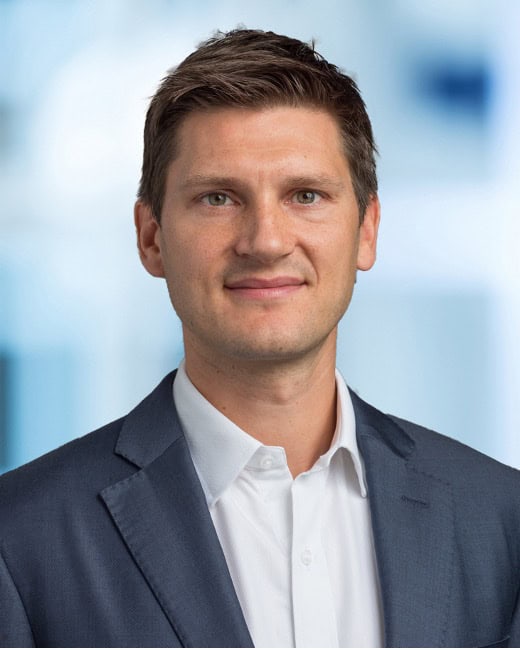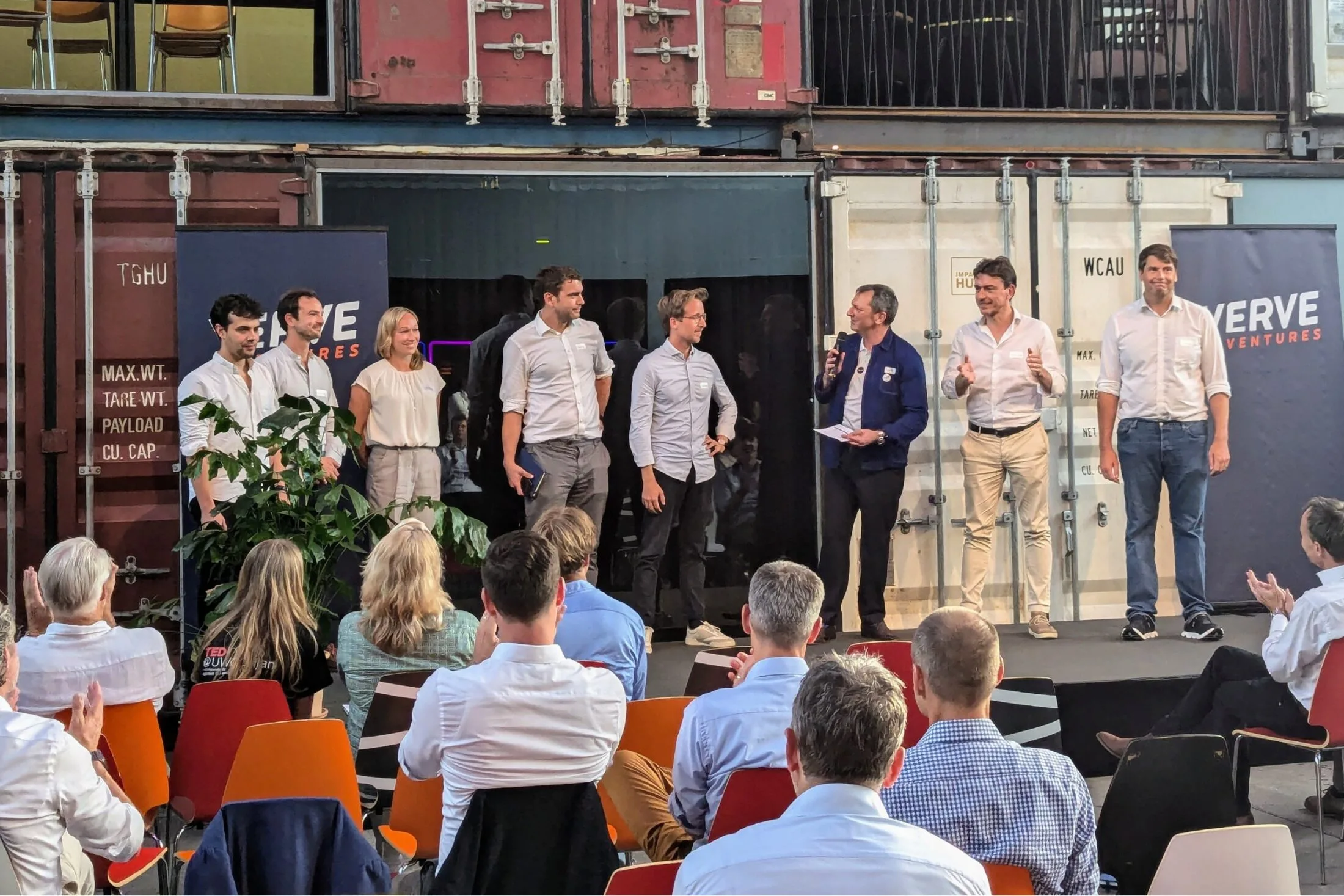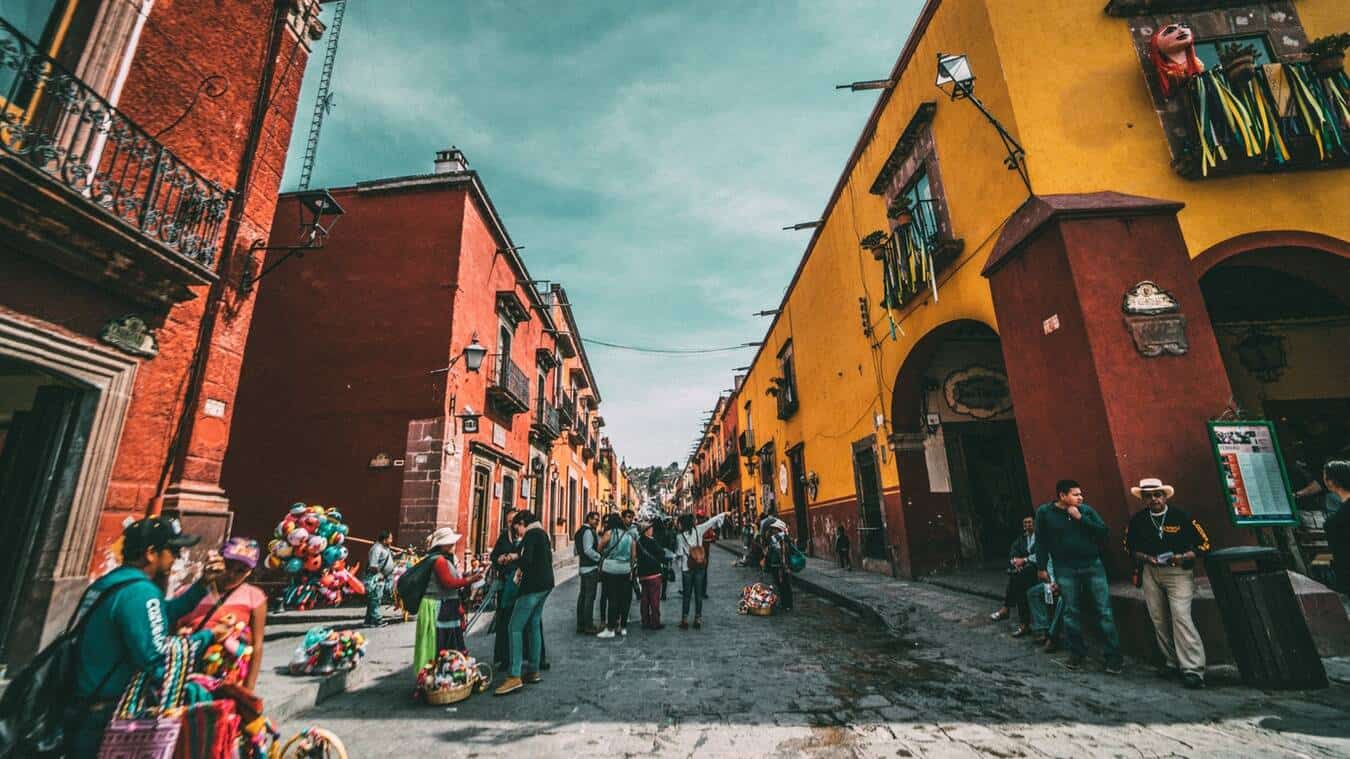As the founder of the Center for Sustainable Finance and Private Wealth (CSP), Falko Paetzold is redefining what it means for wealthy individuals to invest with purpose. In this conversation, he reflects on the personal journey that shaped his mission, the structural barriers that keep banks from embracing impact investments, and how CSP empowers the next generation of wealth holders to turn a burden into a force for good.

Founder, Center for Sustainable Finance and Private Wealth (CSP)
Falko founded the Center for Sustainable Finance and Private Wealth (CSP) at the University of Zurich in 2017. CSP is a research and training center at the intersection of sustainable finance and private wealth. It offers an impact investment training program for next-generation wealth holders, which has trained over 250 alumni since its inception. CSP has branches in San Francisco and Singapore, a foundation as its global umbrella, and its academic home at the University of St. Gallen (HSG).
Previously, Falko founded and led Green Buzz, a community of sustainability professionals with over 7000 members in different local chapters.He co-founded the Impact Investing for the Next Generation program at the Initiative for Responsible Investment at Harvard Kennedy School, was an Assistant Professor for Social Finance at EBS University (Germany), a Sustainability Analyst at Bank Vontobel, and an Impact Board member at organizations ranging from Pictet to ZKB.
Where does your motivation come from that led to the establishment of CSP?
I was born in East Berlin in 1983 and fled, in the trunk of a car, with my mom over the frontier when I was five years old. Growing up outcast and poor in West Berlin was a challenging experience. I learned to be entrepreneurial and had to work to make ends meet. When I was 18 years old, I met my father again, who had become a self-made millionaire; as a result, I also experienced the other side of the wealth spectrum and its dynamics. Growing up in a capitalist society after being born in a socialist state piqued my interest in business and its mechanisms. So I studied business. As for sustainability, I discovered its relevance before it became a widely discussed topic, working in supply chain management at Bosch in China. I have always deeply cared for social justice and the environment and wanted to make this topic of sustainable development the new normal in business. After stints in policy and consulting, I identified banking as a key lever for change in capitalism and joined Bank Vontobel as a Sustainability Analyst. But client relationship managers pushed back hard.
Why?
I also asked myself this question since the topic would lend itself to deepening relationships with clients and defending fees against passive investment approaches. To my great surprise, I found no research on this topic, arguably due to the secrecy in wealth management. I conducted my PhD research on the topic, in part by launching a research project funded by Innosuisse, which involved interviewing wealth holders and relationship managers, conducting mystery shopping at private banks, and administering surveys.
What did you find out?
The first issue that prevents relationship managers from discussing sustainability is the lack of time, generally, and a framework to quickly understand which aspects of sustainability individual clients actually care about. RMs serve a large number of clients, and the regulatory burden is substantial. This led us to develop pragmatic methods for RMs to identify the sustainability interests of their clients.
The second issue is the prevalent mindset many bankers use to defend their position. Many overwhelm clients with jargon to demonstrate the incredible complexity of financial markets. They aim to convince their clients that they require a banker to navigate this complexity. The reality is often the opposite. Financial markets can be complex, but people’s needs are even more so. Many private clients seek investments with a positive impact, or at least those aligned with their values. Bankers are often the key barrier.
The same could be said for venture capital. Most people have to discover the asset class themselves. Their relationship managers will not discuss it or say that the illiquidity cannot be handled.
We recently completed a CSP program where representatives from impact-focused single-family offices discussed the details of their setups. Surprisingly, many of them are highly allocated in private equity and venture capital; one of them even exclusively. Wealthy people can afford to make illiquid investments, and that’s also where most impact can be achieved.
Back to the genesis of CSP. What led to the organization’s establishment?
I attended Harvard and worked with James Gifford, the founder of the UN Principles for Responsible Investment, during its early years. We organized a course for wealth holders centered on impact. It was a protected space to encourage learning. We saw that this program was key in solving a vital problem for highly wealthy people who want to truly understand impact. Antonis Schwarz, one of the first alumni, myself, and then also other alumni and impact champions like André Hoffmann and Monique Baer, found that this type of work should be available to more wealth holders and committed enough funding to establish CSP with a long-term runway.
What kind of problems do very wealthy people have?
One of their problems is that they and others around them think they aren’t allowed to have problems. “You’re rich, don’t complain”. Wealth shapes your identity. CSP alumna Katharina Brück is currently exploring the topic of identity in her Ph.D. thesis.
Now, if a wealthholder wants to have an impact with their investments, they are, for the reasons I mentioned, often poorly served by banks. If you happen to be wealthy enough to build your own large single-family office, perfect: You get to decide everything, build a team of impact-experts, and can choose to be an impact-first investor. However, building your own family office typically requires having more than approximately 300 million euros. If you have less, you need to take action, educate yourself, and work with specialized consultants.
And multi-family offices? What about them?
Some are pushing for impact investing, typically due to the strong commitment of the founding family, yet are still constrained by other clients who care less about impact. There is an important gap in the market for truly impact-first platforms.
Why are wealthy families interested in impact in the first place? And what kind of impact?
Not all families are interested in impact investing, of course. For those who are, their cultural background plays a big role. In Latin America, eradicating poverty is a crucial topic. In China, food and access to food are high priorities. Previous generations knew hunger. In many developing countries, wealthy families promote education as a topic. In Europe, many are interested in climate.
Guilt can also be a motivation for impact investing. Seeing the miserable state of our world is another. Inheriting a large amount of money can feel unnatural in an otherwise meritocratic society. Many next-generation individuals view their wealth as a burden. Add to that difficult family dynamics, and you will not be surprised that many wealth holders have a genuine interest in making the most of the wealth they have received and turning that burden into an opportunity. Many realize this during our programs; it is a great unlock.
Money is a powerful tool, but many people lack the knowledge to use it effectively. They are afraid to make errors, which, to be honest, is easy if you’re not an expert.
It’s part of the bank’s business model to tell you exactly that. This is the reason CSP exists: to teach impactful wealth management to the owners in simple terms and drive the research behind it. Even if you have a Ph.D. in Finance, you might not know much or anything about the different mechanisms to drive meaningful change through investing.
If you want simple explanations, you can just ask an AI chatbot.
The knowledge of some wealth holders is so low that you need to start with the difference between stocks and bonds. But hard skills and knowledge are just one element of action. We provide a platform for people to connect and learn soft skills as well. How do you discuss impact with your uncle, who is only interested in returns?
How can this be taught in a program?
We work in groups and consider which of a set of different portfolios would be most suitable for specific archetypes. If Maddie, who owns a house and has a job that pays her expenses, inherits 50 million, what type of impact investing strategy would suit her? A public equity fund that focuses on engagement or a dedicated, illiquid impact fund? When we engage in such exercises, participants are already better equipped than most relationship managers at banks to identify the right strategy for a typical client, as well as for themselves. They also learn how to conduct due diligence on an impact fund and become familiar with important concepts, such as additionality.
Investor education is also a key focus at Verve Ventures. There is a difference between just trying out something new and investing with confidence in risky assets. How does CSP measure the quality of your education?
We frequently receive this question, which is why we had a third-party organization extensively assess the impact of our program through surveys and qualitative interviews. What is most important to me is the increase in confidence in managing one’s capital, and how much alumni attribute their increased confidence to the program. Before, two-thirds of participants had low or no confidence. And we’re talking about people who are already interested in the topic. Afterward, most have at least some or even high confidence. They are ready to take charge of their wealth, for impact.
However, what many people seem to care about is the question of how much money was guided from a no-impact strategy towards impact investment thanks to the program. For the next-gen program alone, the assets amount to USD 30 billion per 2023. That isn’t much yet, considering the size of pension funds, but I believe in equipping the next generation of impact champions with cutting-edge knowledge so the message can spread.
The next generation who is interested in impact are not necessarily those who have a say in how the family fortune is invested. Is this the major challenge?
Many family offices now openly state that generating more wealth is no longer their primary objective. If you visit the VP Capital website, for instance, it states, “Driven by Impact,” as its first message.
The good news is that even if you have a finance-first mindset, you can end up with a large portion of impactful private equity and venture capital investments because these investments are shaping the future and responding to urgent problems…
… which is exactly what the majority of Verve Ventures’ portfolio companies do.
However, there are many family offices where the mindset and capacity gap between the generations is already causing a great rift.
How so?
We have concrete examples from workshops with billionaire families where the patriarch runs the family office as a moneymaking machine and is very happy with it. The problem is that the 30-something-year-old next generation is completely disempowered and disconnected from the family. They have completely different aspirations. They might be happy to live very modestly, as artists, and have no connection to wealth that lacks a purpose.
I have described similar family setups in my second book…
Such families are on track to disintegrate and become embroiled in conflict. These rifts between generations can be mended, but families need to become aware of them and act early enough. They emerge when the generations sit together and discuss their values and what is important to them. It serves as an eye-opener for the older generation. This is the superpower of impact: to increase family cohesion. Because ultimately, everyone cares about something. If you take the topics of the 17 Sustainable Development Goals, health, cities, justice, hunger, water, et cetera, and ask people what they care about and why, even the most grumpy old cat opens up.
A moderated family governance process helps make different views apparent and find common ground. But the problem of inaction remains. I have talked to wealth holders who claim to be interested in impact but still have their money managed by asset managers that do absolutely nothing in that regard.
This is why we have everyone in our program write down their impact policy statement. It outlines the purpose of your wealth and the goals you want to achieve.
Why is this important?
Because it is a framework that makes your thinking actionable. It is the document that informs and instructs your asset manager to do what you want, not what they usually do. It is also not that trivial to write, which is why we give space to discuss your IPS with others. Comparing notes helps sharpen your thinking. We also use examples from others and show how this living document can evolve over time.
Can you give an example of such an evolution?
The IPS of a successful entrepreneurial couple has undergone several revisions. They changed their thinking from “Investing only in what we understand” to trusting several specialized advisors. First, they wanted to deploy capital in illiquid assets slowly; now they do it more rapidly. And instead of seeing the goal of capital in funding their lifestyle, they have carved out a portfolio that does not need to serve that purpose and is open to concessionary returns.
Impact can mean different things to different people, and some practitioners now talk about ‘deep impact’ to differentiate themselves from what they perceive as more pedestrian approaches. The field evolves and integrates new schools of thought, such as systemic investing, which heavily relies on maps and diagrams to visualize complex systems. What is its main contribution to the impact discourse?
The method helps to understand the ongoing transformation of complex systems such as healthcare or energy. It facilitates changing one’s mindset and portfolio, too, from many investments in point solutions to a more holistic approach. If you start mapping systems and their structures, important leverage points become apparent. Such maps help you become a better investor because you quickly realize which important areas you don’t know enough about yet. It can help avoid investments that are under regulatory pressure or identify which leverage points need to be addressed through advocacy to make the system more sustainable.
You mentioned both investments and advocacy. Combining and leveraging several forms of capital, not just financial but also, for example, social capital in the form of one’s reputation and network, is a concept known as multi-capital. What is the relevance of this concept?
The most sophisticated impact investors indeed use a multi-capital approach for systems change. Take Lukas Walton, for example. The Walmart heir has committed 15 billion dollars to Builders Vision. Its efforts for a healthy ocean system span several asset classes, philanthropy, partnerships with other organisations, and campaigning for a better understanding of the importance of oceans. He even gave an interview, which he had never done before.
Such efforts, once they become public, are usually the result of a journey that can have a significant impact, where people slowly start to learn about these things. What is the main reason why wealth holders embark on such a journey?
As one couple who established their impact-first family office once told me, the question should rather be the opposite: What is your main reason for not caring about your impact?
Written by
Investors

Our sophisticated investors include visionary family offices, leading wealth managers, institutions, founders, and senior executives. These individuals and organizations are all committed to shaping the next generation of innovation.
More News
What is the impact of the current economic situation on startups?
This article is based on a webinar Verve Ventures held in June 2022. David Sidler interviewed Michael Lütolf about the implications of the bear market in public equities on private companies' valuation.
The next generation of venture capitalists
Investiere is proud to announce the launch of its first Venture Fellowship Program with the Cambridge University Venture Capital and Private Equity Society (CUVCPES). In this interview, the Society’s chairwoman, Shelby Newsad, and President, Michelle Parker, talk about their interest in venture capital and explain the program’s goal.
“Access to capital has a positive impact“
Kiwi's co-founder Christian Sinobas explains how microfinace is changing, why micro merchants are good customers and how he manages a startup on two continents.


